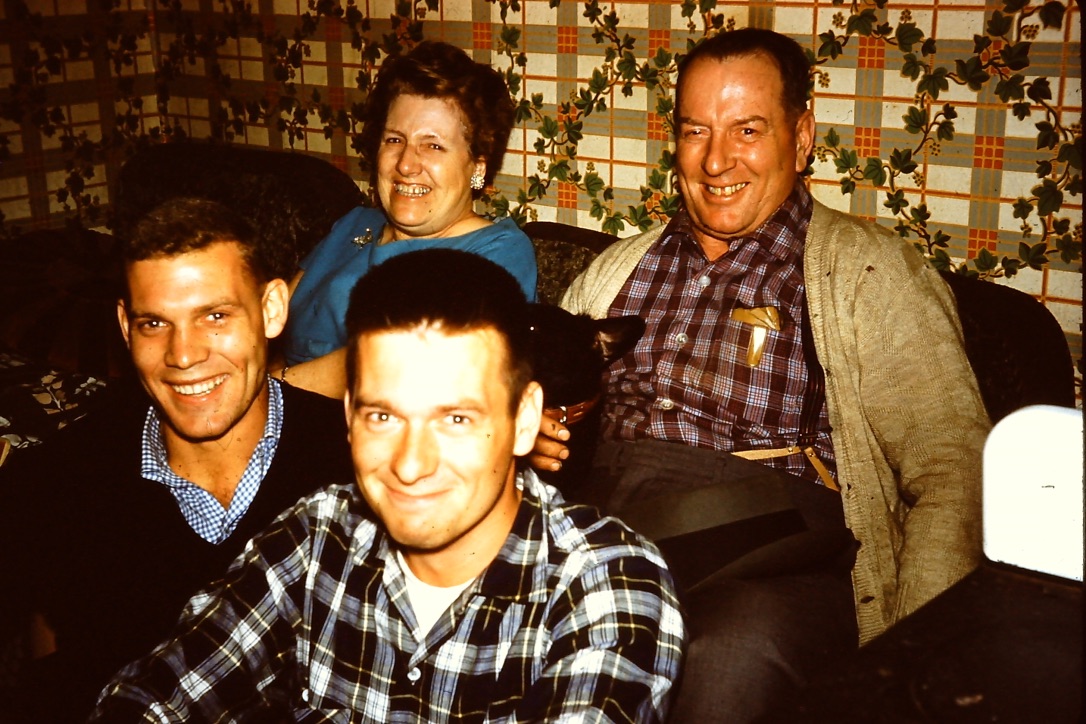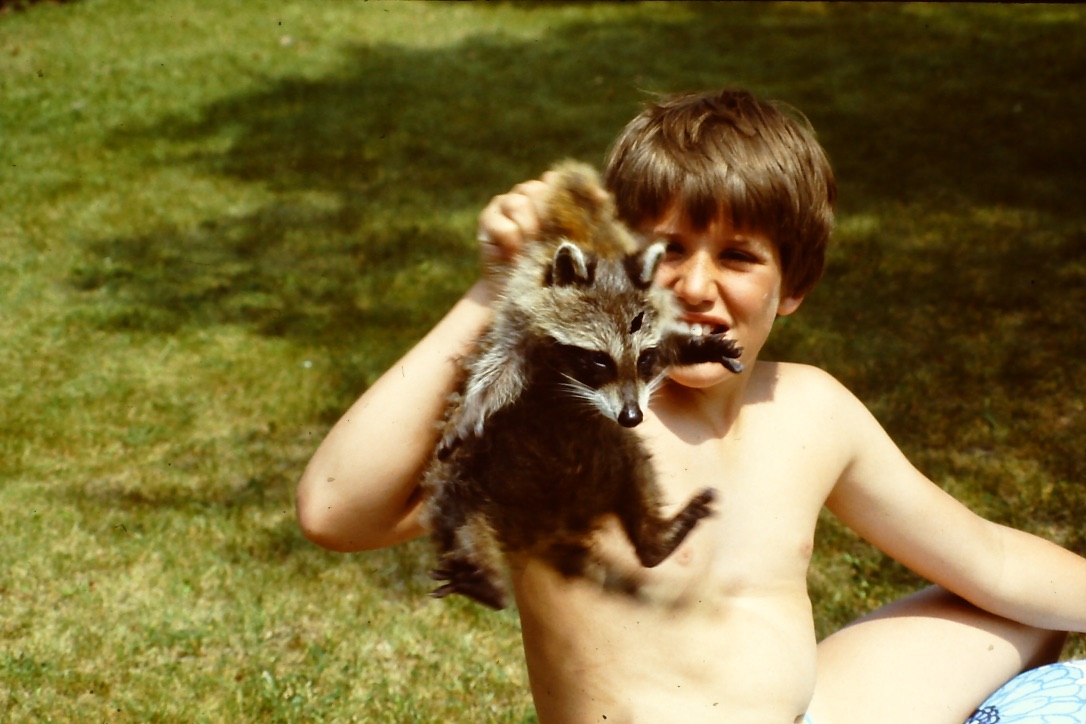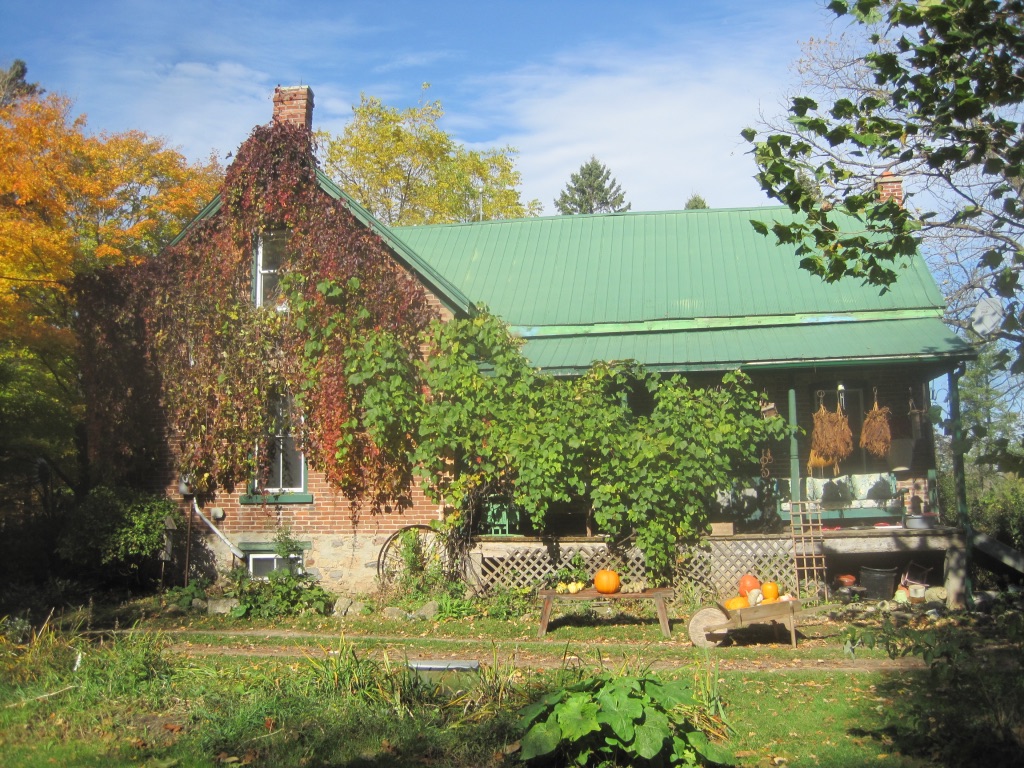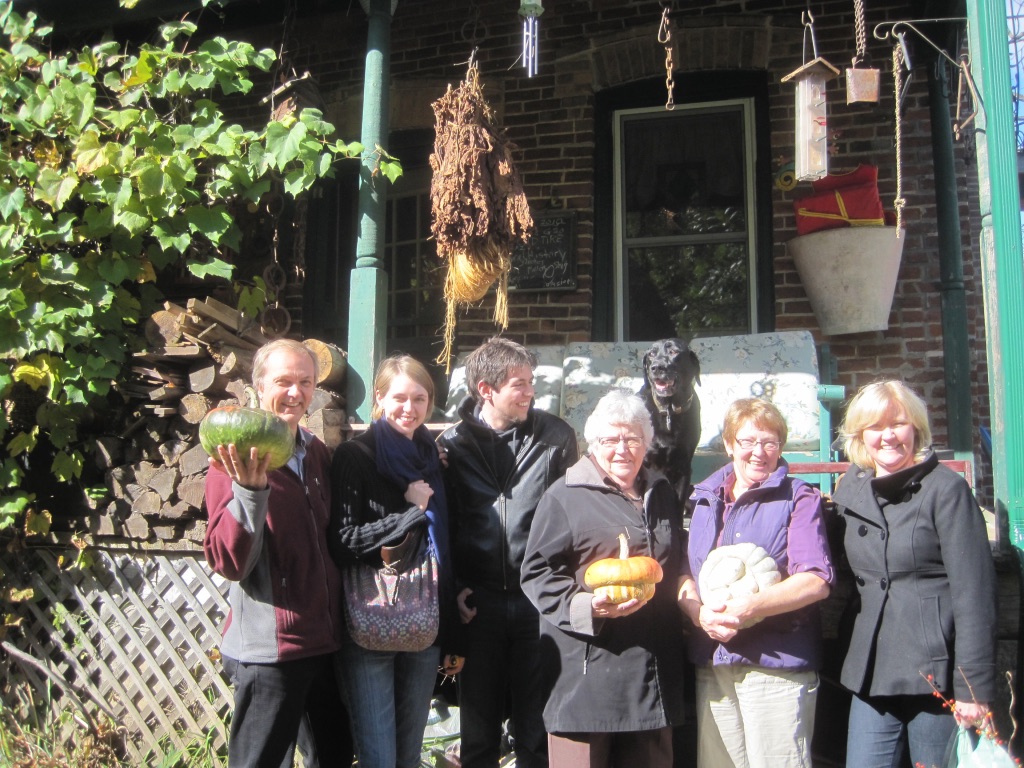EPISODE 111 ALAN, NEVER LET YOURSELF BE HOSTAGE TO FORTUNE.








alan skeoch
Sept. 6 , 2020

OUR farm house was built around 1870 or 1880. The owner at the time had very little money…he had to cut corners as we discovered
in the renovation a century later. The design was common … available plans in Eaton’s catalogue. Mom, grandma and their dog Punch
on front lawn.

We inherited the farm in 1958. Condition? Not so good. We could barely afford to look after our
city house.

Our family around 1958 when we inherited the Freeman farm. We were not wealthy so owning property like the farm
was a novel and frightening thing. Only later, around 1990 could Marjorie and I afford to renovate…and even then it
took the shock of the robbery to force us into action. Picture: left to right…Eric, Elsie (Freeman) Skeoch, Alan, Arnold (Red) Skeoch
We laughed a lot…in this case someone broke wind Just as I set the camera for a delayed picture.
Months after the farm robbery we had to give serious thought to the farm future.
Should we keep the farm or put it up for sale like was happening to so many
other historic farms. The debate was just awful.
THE choice? Sell everything or pour a lot of money into restoration of the farm house.
Depressing thoughts. The loss of so much. Family treasures gone. The usual ‘poor me’
comments by persons who have been robbed. grieving that deep
sense of loss when someone you love is gone. Anger. Feeling violated. All
that and more. For the first few hours.
Then the clouds of doubt cleared away.

Granddad made small wheelbarrows for us. Note the sad dog house in the background. Fancy living on a farm? Not so much.
Then I thought of Evan Cruickshank who had such a powerful influence on my life.
“Crooky” had been our history teacher at Humberside. A man of deep intellect.
And later he hired both Eric and me as history teachers at Parkdale Collegiate in
west central Toronto. I got to know him really well as did Marjorie. Respect and
friendship. “Crusher” Cruickshank had many words of wisdom which he shared
Never heavy handed sharing. Never patronizing.
Our robbery was hurting. At its worst when I suddenly remembered “Crooky’s”
comment regarding material things in life. “Alan, never let yourself be hostage
to fortune.” Said another way. “Never let things own you. If you do you will
have an unhappy life.”
We were grieving the loss of the furniture and everything else in the house. What we
should have been thinking about was the house itself and the future direction we would take.
NOTE: The term hostage to fortune means that wealth, family, possessions can hold
us hostage. Crooky added ‘Never be’ to ‘hostage to fortune’ which I believe meant
to never let the material things in life hold you hostage. Do not worship your wonderful car,
for instance.
I am not sure this point if clear. We decided to put our money into a dream rather
than save it for who knows what . Maybe that is not even clear. We took action.
That is clear.
Many many Ontario farm houses that were built far better than ours have been destroyed.
SO A DECISION WAS MADE: WE WILL RESTORE THE FARM HOUSE
“Let’s do it…restore the farm house.”
“That means a total gutting of the interior.”
“Give the job to Kevin and Andy…strip back to the bricks.”
“The boys will enjoy it…demolition and teen agers go hand in hand.”
1) So Andrew and Kevin using crowbars, sledges, hammers and a wheelbarrow
began stripping away the plaster which was already in decay…then the lathe
some of which was even ancient split lathe. Wheelbarrow loads were dumped
outside.
2) Beneath the plaster they discovered that our brick farm house was really
not a brick house at all. Underneath was a barn frame…heavy hand hewn beams
pegged together as was the custom in 1870. This was not a house at all. Had
we depended on the bricks to hold the ouse up then there would be no house.
The bricks were soft as a baby’s bum. They had been shaped and fired less
than a mile away near #5 sidereal. Weak. I wondered why other brick farm houses
had collapsed and ours did not. Now I knew. Ours was a barn.
3) But The big beams had not been made here. No group of men with broad axes
had spent a year or more preparing white pine beams. No. Our farm house
was made from beams collected here and there across the township in 1870 or so.
How did we know? Because many beams had burn marks. The beams had
been gathered from older burned out buildings…barns, drivesheds.
4) Nothing special about the beams. The great floor beams were only rough
hewn on one side…sometimes two sides. The other sides still had the bark.
This house was not an example of fine art carpentry.
5) The board floors had been worn to nubs by hundreds of feet over the century.
The nubs were the knots. Harder than the planks and therefore when worn and
stamped on left a wavy floor that I always found charming. But it had to go and
so the boys got crowbars to lift the ancient slabs. Too bad. Loved the old floor.
6) They made one amazing discovery. Hard to believe I know. The centre of
the house was held up by one long carved beam. Crucial piece to which all
the other beams were attached directly or indirectly. “Guess what, Dad?”
“What?” “The main beam hangs in the air.” The main beam never touched
the ground. It was free standing. How that happened we will never know. had
we not stripped the walls that fact would remain a little secret. How the roof
held up for 130 years or more I will never understand.

Ricky the Raccoon was a pet of ours until he reached puberty when all things changed. While young Ricky would scamper up our
shoulders to sit on our heads. Here he is being gently removed by David S.

Did Ricky the Racoon sneak back and take up residence behind the plaster and lathe of the farm house? Not likely. We let him
go in a farm field far away. But raccoons are smart.
7) That was only one discovery. There were others. Like finding a nest
of raccoons in the upper bedroom wall. They had made the house a home
for years it seems. And then there were the red squirrels who can chew there
way into any house. Mice, of course. A plentiful supply that the garter snakes
must have found convenient food. A bunch of snakes lived in the field stone
foundation. They may still be there since the foundation was never changed only
braced.
8) The basement floor was dirt. Hard packed dirt. Three rooms down there, each
with a function but all with dirt footing. In spring this cellar was wet…pooled water
often. But the walls held. One room had big dirt floored stalls…one for coal, one for potatoes,
carrots, etc. The other room Grandma called “the Dairy’ where she kept food in
the cool dark. Slabs of beef hung here which was why I liked to slather our meals
with Worcester Sauce. I never trusted the Dairy. No good reason. Grandma and
Grandpa Freeman lived here deep in their 90’s. The other big cellar room
had an old but huge cook stove with a pipe hole exit carved into the foundation. This was
grandma’s ‘summer kitchen’ but was never in use when we were growing up. There
was a rickety staircase and a trap door that gave access to the main house.
Granddad had his carpenters tools there as well. As a kid I stole one of his
chisels and got caught. I ran and hid in the tall summer grasses and golden rod
on that day. Humiliated because I was caught. I still have the chisel somewhere.
Granddad gave it to me. He was a master craftsman.
9) Kevin and Andrew also had to clean out the attic…a long unfinished room
that ran eastwards from the upstairs bedrooms where the raccoons lived.
That attic was a wonderful treasure trove. For most of my pre teen years I explored this
room endlessly. For years it was full of spinning wheels, walking wheels and all
the wool processing things of the 19th century and other treasures that were to me
a mystery. I remember when most of that stuff suddenly was gone. “OH, Elsie (my
mother), a wonderful man came by and paid us money for the things in the attic.”
“How much?” “Ten dollars” Bastard.
10) The scavenger missed a 1920’s “skin” book called Smokehouse. Lots of rather
off colour jokes and some suggestive drawings of stockings with legs in them … at least
as I remember. And, oh yes, the explosive novel “Tobacco Road” by Erskine Caldwell.
At tale of poverty and prejudice in the American south. That book would even be
scandalous in today’s liberal world. It was falling apart as it had been read and re read
and re read again by me.
11) So the house was stripped bare…a shell. No, a folderol i.e. A barn within a brick house.
Now we had to find a builder. By good fortune we noticed a truck while getting ice cream cones
in Erin. WAYNE SHANNON, BUILDER No beating around the bush we hired him to renovate
and reconstruct the farm house. He had some great ideas. Open concept.
12) And he said a couple of things I had not counted upon “Where do you want the bathroom?”
My response was “What bathroom?”…because we had a perfect backhouse I had built. Marjorie
chimed in and so we got two bathrooms. His next question was about the trap door to the
cellar. “Of course we will close that trap door and put a stairway to the cellar.” “What? I love that
trap door.” Then everyone chimed in so we got a stairway. And another question I had not
counted upon was the furnace. “What furnace? Isn’t the old wood stove good enough?” That
thought was also put to rest when Wayne found us a good electric furnace.* (Note..furnace
will be subject of major story later…a story so big that my picture replaced the Sunshine Girl
on the Toronto Sun. No vanity involved…just a very bitter fight with Hydro One)
13) Wayne and his worker crew spent the whole winter changing the farm house. What a
terrific job they did. The house became a home. We have entertained there so much
since. Grand dinners. Wayne did not stop with the house. “Alan, you need a barn.”
On this, I agreed so Wayne built us a barn with a cement floor. These were good times.
TO WHOM DO I OWE MY GRATITUDE?
I really must thank the robber that stripped the farm house of furniture and who knows what else.
Without him we would have never taken such drastic action Good things do often emerge from
what seems bad at first.


Renovating the farm house has enriched our lives. Lots of friends have joined us. In this case the Christophersons. They
seem to have pillaged the garden. Brenda’s father was a crop duster in Manitoba with a plane much like the one that
tried ti kill Cary Grant.
alan skeoch
Sept. 6, 2020
z
